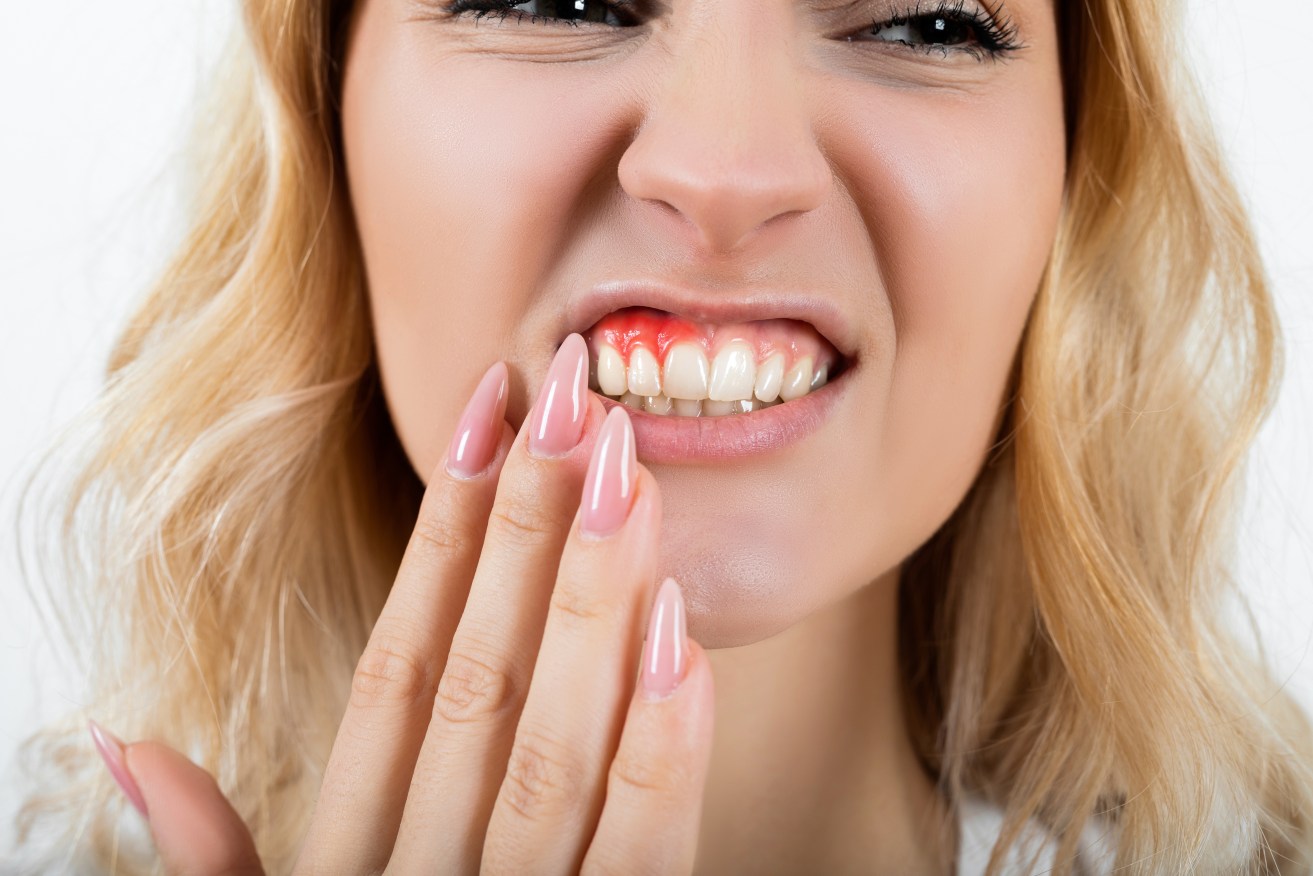New dental gel treats gum disease by stopping inflammation


The idea of a cream or lotion that could fix gum disease has been little more than a dream. Is that about to change? Photo: Getty
Your gums are inflamed. Yes, there’s been a bit of blood on the toothbrush. Maybe you don’t floss twice a day, or even every day – and you pledge that you’ll do better.
The dentists says the good news is that your gum disease isn’t much progressed. It’s that damned gingivitis they talk about in toothpaste commercials.
At this point it’s all about rooting out the bacteria that festers in the pockets between your teeth. A ‘deep clean’ is required.
Now the chair is going back. At least it’s not a root canal or the extraction of a rotted tooth but … wait a minute what the hell are you doing?
The dentists have ventured below the gum line. That scraping and making smooth the naturally sensitive roots of the teeth is called planing – which helps the gums reattach to your tooth.
You want to put a stop to that, quick smart
Once your gums lose attachment to your teeth, they soon begin to visibly recede, and you’re now in the early stages of periodontitis, or periodontal disease.
The infection has moved into the bone, which is being eaten away and can never be replaced and your teeth are at risk of falling out.
Time to see a specialist … who may end up grafting bits of healthy gum over your exposed roots.

Periodontitis and inflammation of the gums. Image: Getty
At some point in your gum disease journey, perhaps when infected tissue is being cut away for the first time, you might ask a reasonable question:
For heaven’s sake, if this is all about bacteria, then why can’t you just treat it with antibiotics?
Whatever answer the dentist gives you probably won’t satisfy. They’ll talk about inflammation and tissue damage and then shrug.
Not as simple as it seems
As a review paper published in 2000 makes clear, “periodontitis is a complex disease”.
“Various causative factors play a role simultaneously and interact with each other,” the authors write. Genetics, they say, may play a part.
A paper published in 2021 suggests that gum periodontal disease is revealing itself as more complex than ever.
The authors say that, aside from “newly identified immunological and genetic mechanisms”, recent studies have revealed “the importance of previously unidentified microbes involved in disease progression, including various viruses, phages and bacterial species”.
Boiling that down: There are bugs involved in gum and bone disease that have only been discovered.
This suggests we are moving further away from discovering a simple treatment than ever.
New York researchers might have cracked the code
In 2017, researchers from the New York University College of Dentistry investigated succinate, a byproduct from metabolic processes that occur in the gut microbiota.
Succinate has a key role governing intestinal homeostasis and energy metabolism – but elevated levels have been associated with obesity, type 2 diabetes, microbiome disturbances (dysbiosis), as well as inflammatory bowel disease. See here and here.
The NYU researchers found that elevated levels of succinate activate the succinate receptor and stimulate bone loss.
Stopping gum disease in its tracks
These findings made the succinate receptor an appealing target for countering inflammation and bone loss – “and potentially stopping gum disease in its tracks”.
The NYU team, in a new paper, describe research that “lays the groundwork for a non-invasive treatment for gum disease that people could apply to the gums at home to prevent or treat gum disease”.
In short, they have developed a prototype gel that people could rub on their gums at home and avoid all that sweaty deep cleaning.
The topical gel blocks the receptor for succinate and treats gum disease by suppressing inflammation and changing the makeup of bacteria in the mouth.
How did they get there?
According to an explainer from the NYU, the researchers began by examining dental plaque samples from humans and blood samples from mice.
Using metabolomic analyses, they found higher succinate levels in the samples from people and mice with gum disease.
They also saw that the succinate receptor was expressed in human and mouse gums.
To test the connection between the succinate receptor and the components of gum disease, they genetically altered mice to inactivate, or “knock out” the succinate receptor.
In “knockout” mice with gum disease, the researchers measured lower levels of inflammation in both the gum tissue and blood, as well as less bone loss.
Curiously, they also found that mice with gum disease had a greater imbalance of bacteria than did “knockout” mice.
When the researchers administered extra succinate to both types of mice, the gum disease worsened in the normal mice (those with the intact succinate receptor).
However, the “knockout” mice were protected against inflammation, increases in unhealthy bacteria, and bone loss.
“Mice without active succinate receptors were more resilient to disease,” said Dr Fangxi Xu, an assistant research scientist in the Department of Molecular Pathobiology at NYU Dentistry and the study’s co-first author.
The gel prototype
How to translate these findings into a workable treatment?
The researchers developed a gel formulation “of a small compound that targets the succinate receptor and prevents it from being activated”.
In laboratory studies of human gum cells, the compound reduced inflammation and processes that lead to bone loss.
When the gel was applied to the gums of mice with gum disease, it reduced local and systemic inflammation and bone loss in a matter of days.
The researchers are continuing to study the gel in animal models to find “the appropriate dosage and timing for application, as well as determine any toxicity”.
The long-term goal is to develop a gel and oral strip that can be used at home by people with or at risk for gum disease, as well as a stronger, slow-release formulation that dentists can apply to pockets that form in the gums during gum disease.








